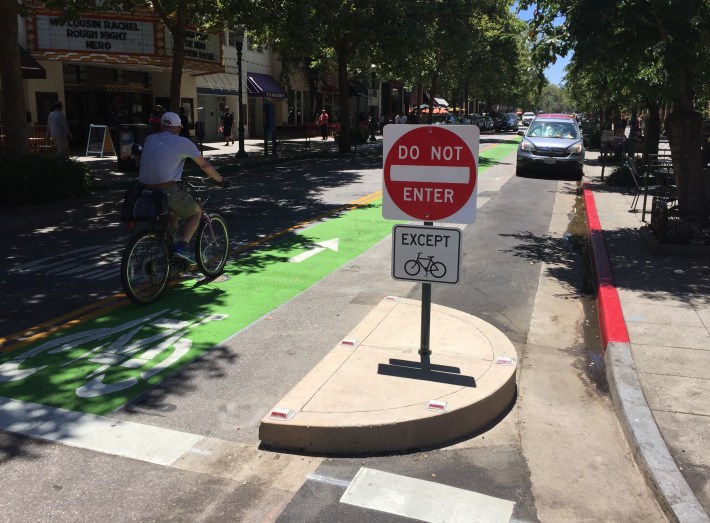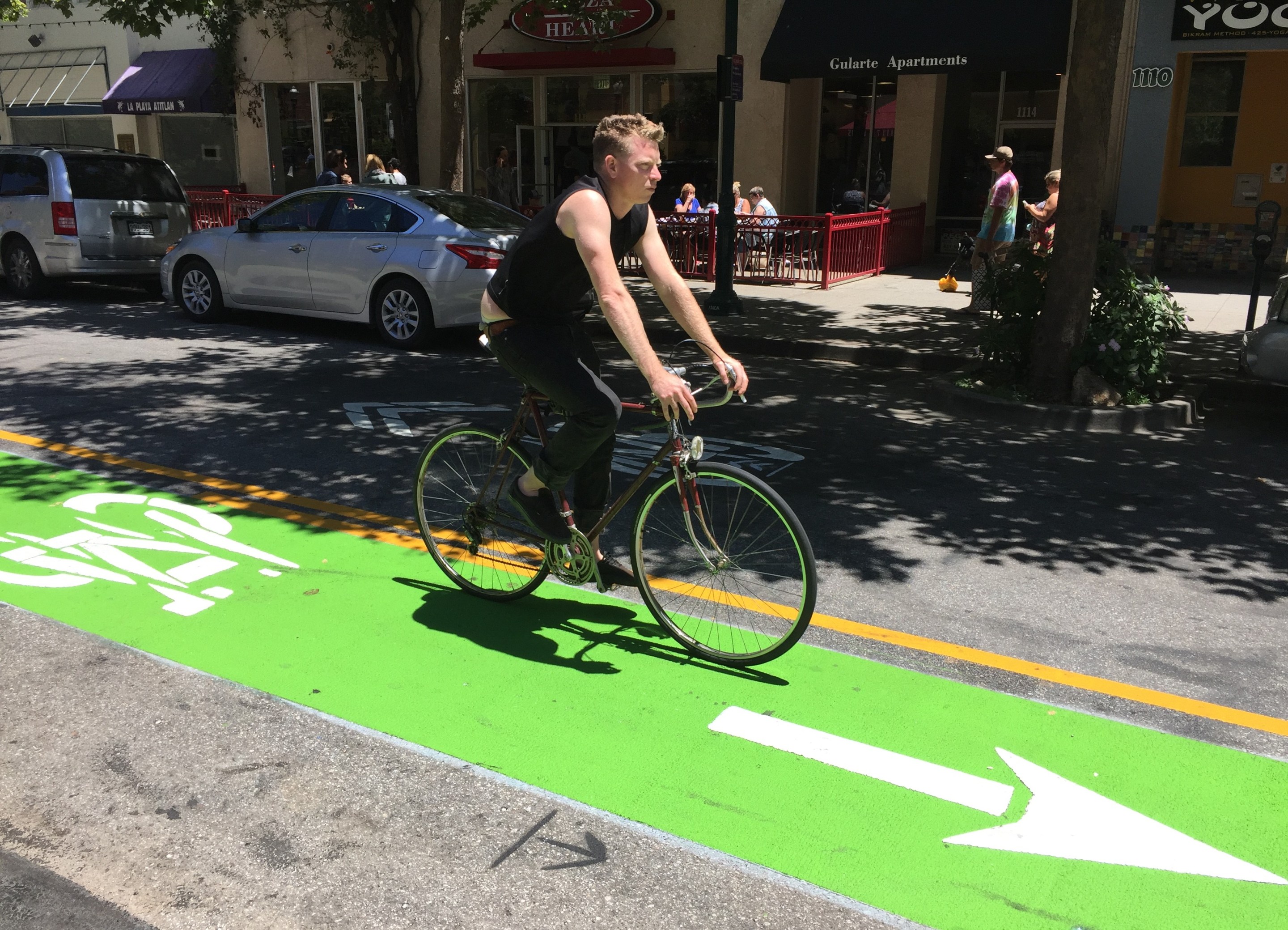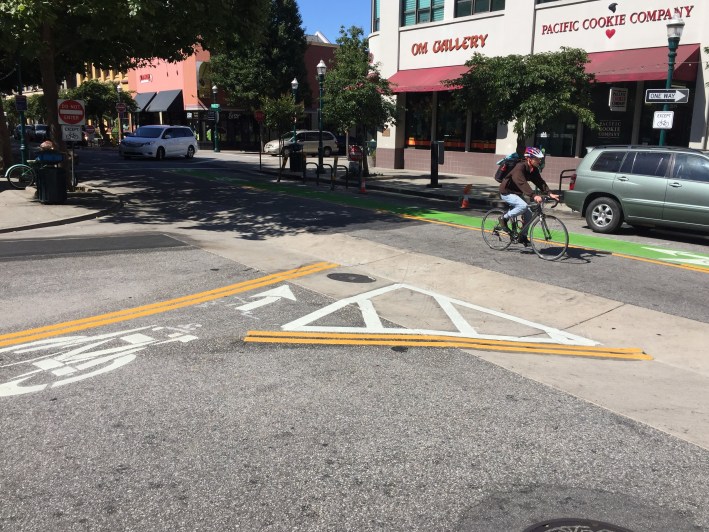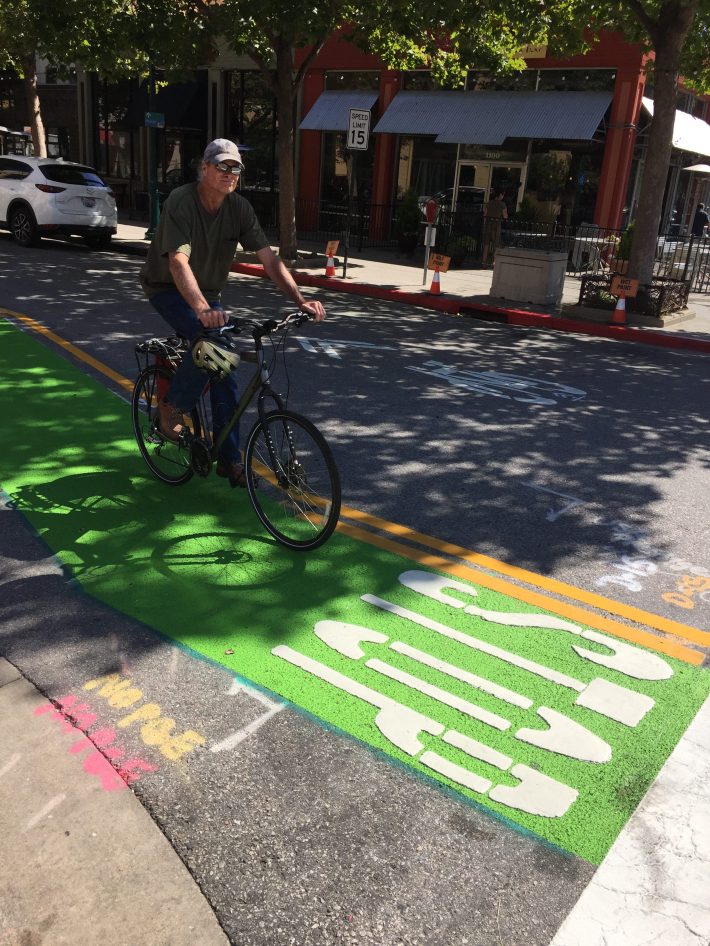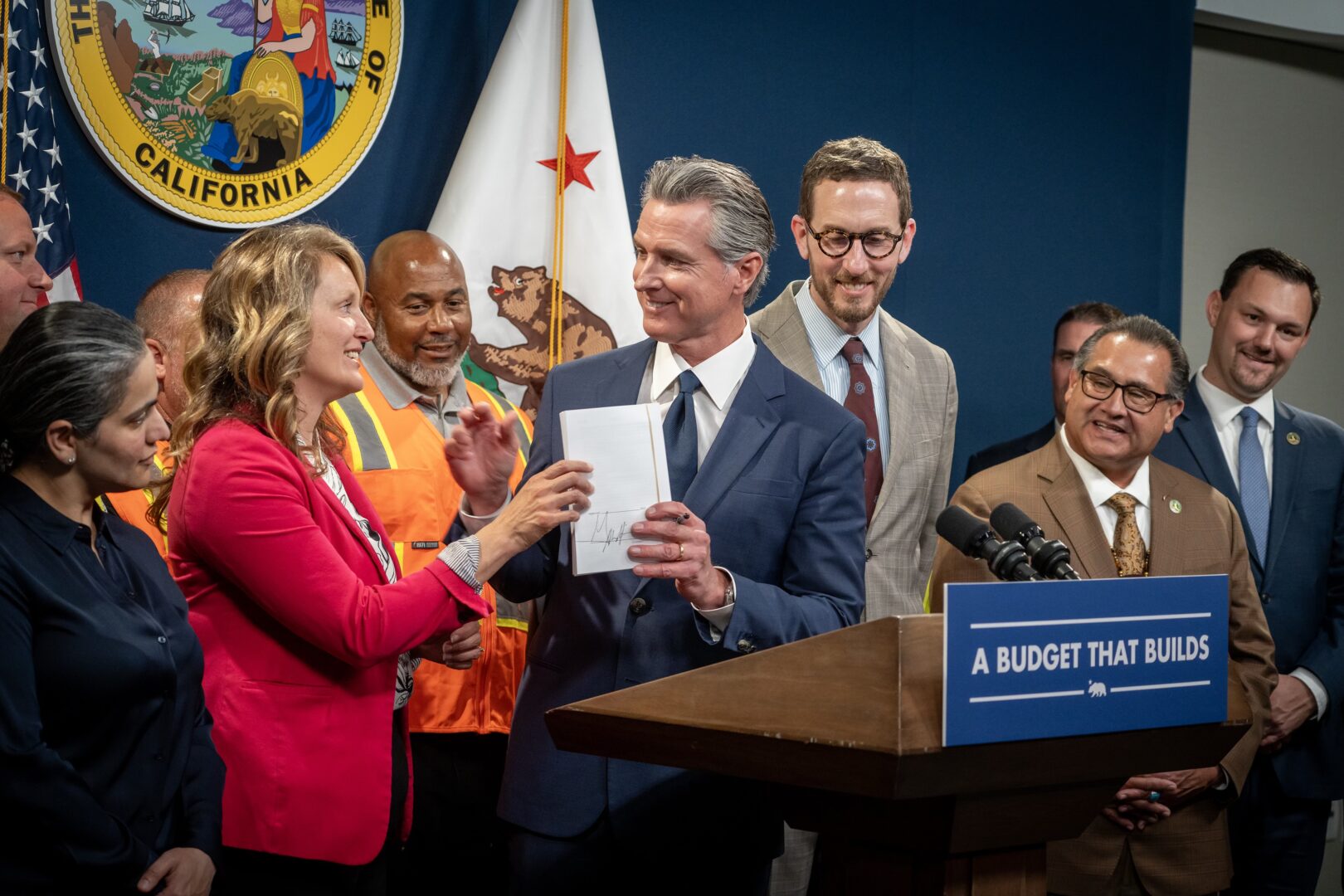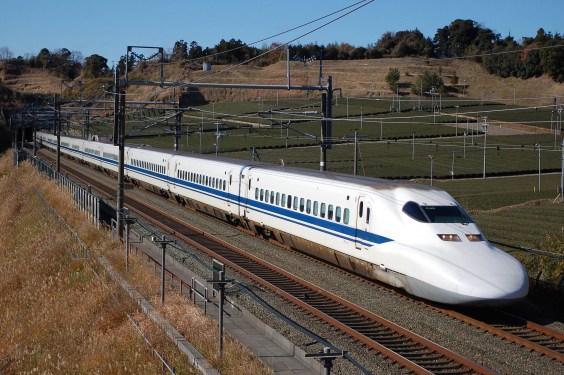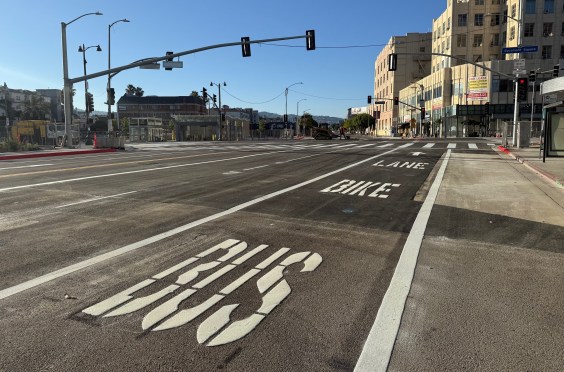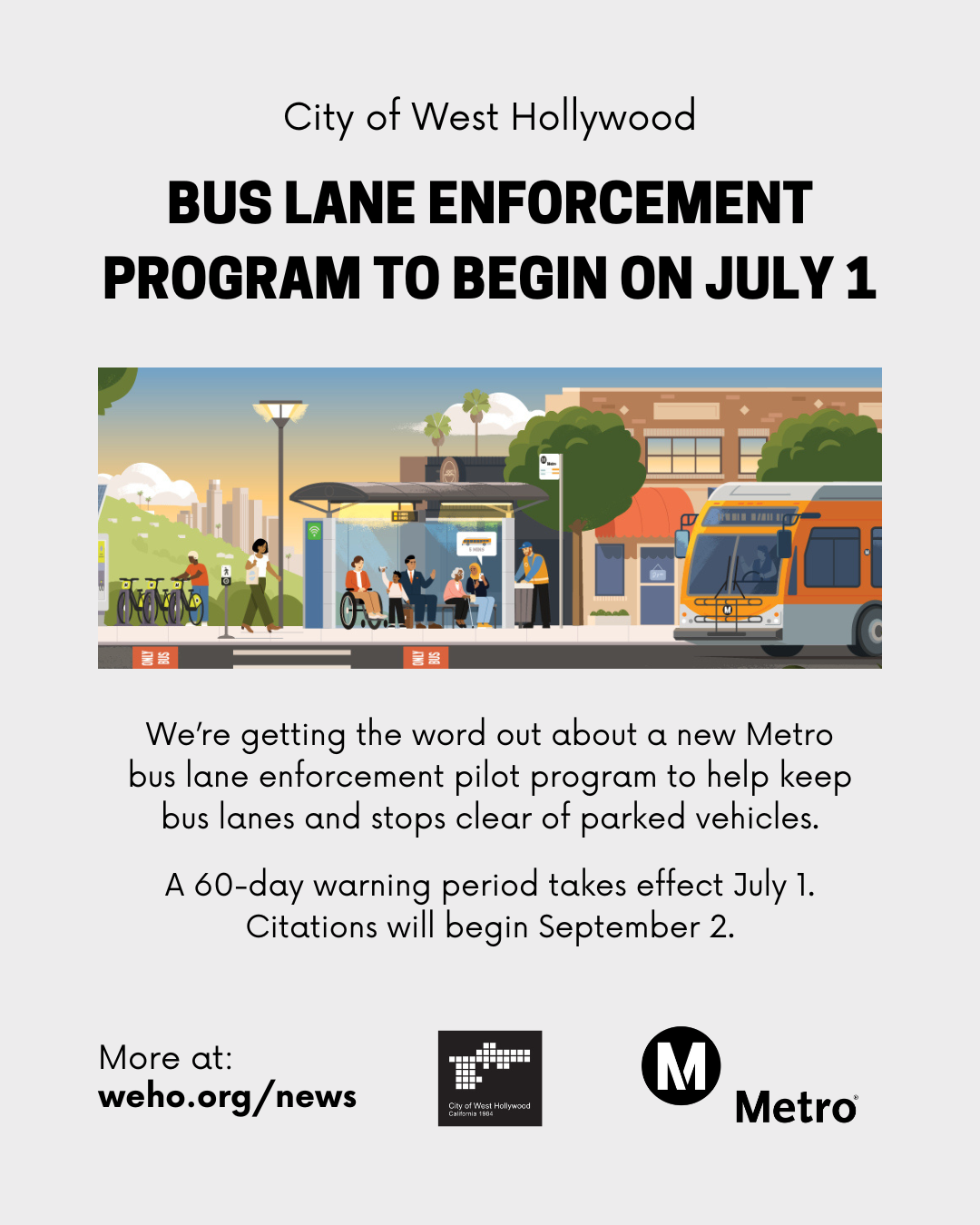On June 27, downtown Santa Cruz celebrated the opening of Pacific Avenue's one-way green contraflow bike lane. The bikeway extends about 1/5 of a mile - three blocks - from Church Street to Cathcart Street.
Pacific Avenue was and still is one-way northbound for cars. The new configuration adds the option for cyclists to legally ride southbound. Cars have one lane northbound, plus parking on both sides of the street. Northbound cyclists share the lane with cars; that lane has sharrows.
Though this is a somewhat unconventional treatment, other cities have added coutraflow bike lanes in situations where there were issues with "salmon" cyclists going the wrong way on segments of one-way streets. Sometimes, where it is too difficult to curtail wrong-way cyclist behavior, and where there is enough space, one good option is to make it legal with a contraflow bike lane. According to Cruz511, Mayor Cynthia Chase stated that the new bike lane "will also help to deter the common occurrence of people riding the wrong way on Pacific Avenue or riding on the sidewalk.”
